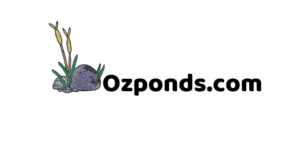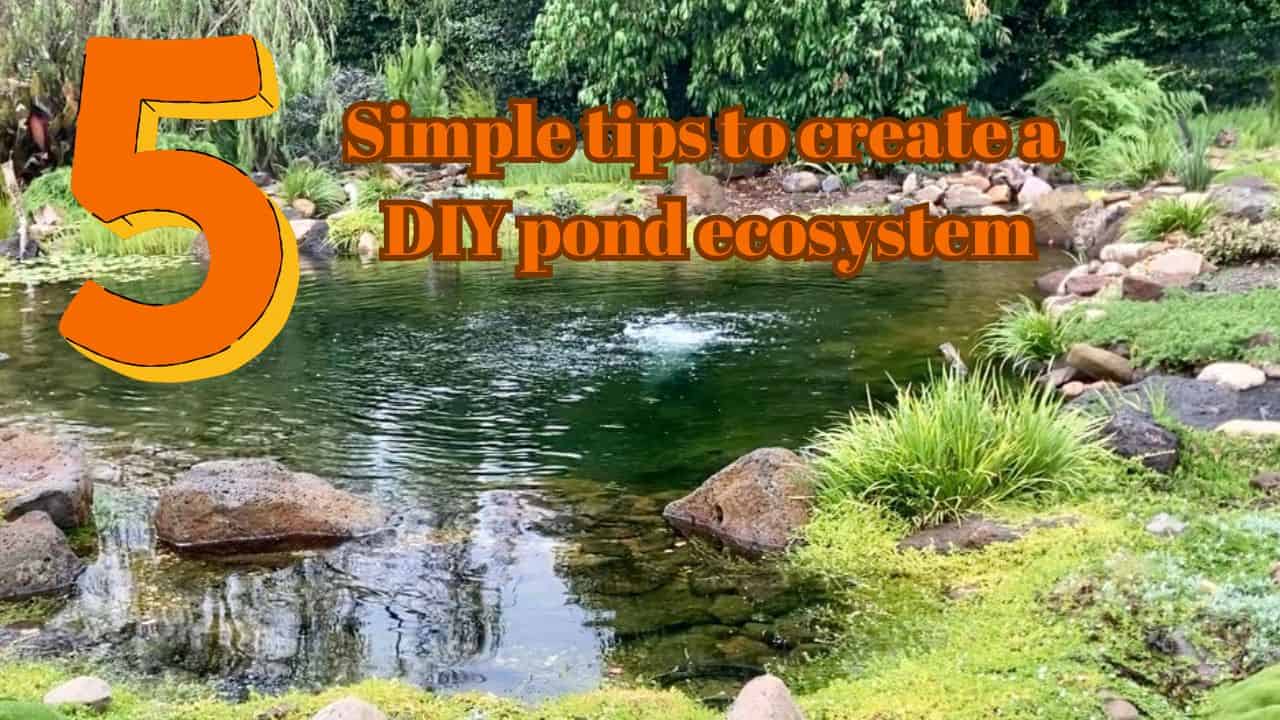Hey there, I’m Kev, and I’ve got a simple philosophy when it comes to owning a pond: it should be easy, low-maintenance, and budget-friendly.
In this blog post, I’m going to share with you the insights I discussed in my YouTube video on how to create a complete pond ecosystem that practically takes care of itself. You can either watch the video or read this blog post.
The Lazy Pond Owner’s Dream
Let’s kick things off with the idea that having a pond should be a breeze. I’m all about a pond that looks great year-round and doesn’t require a ton of upkeep or expensive gadgets.
My mission is to help folks like you build and maintain ponds without emptying their wallets.
Building the Foundation
In my previous video series, I covered pond basics, but today, we’re honing in on creating a complete ecosystem within your pond. It all starts with understanding the food chain.
If you want to lean more about how to build inexpensive filters that will help keep your pond water clean, clear and healthy head over to my youtube channel there’s heaps of videos on different DIY filters I’ve built for my ponds (Ive got lots).
There is also lots of articles here on the website. Something like this article (the ultimate guide to building an ecosystem pond on a budget) is a great overview on creating a DIY pond on a budget.
The Role of Microorganisms
Microorganisms are unsung heroes in your pond, breaking down waste. There are many types of microorganisms, bacteria and algae: from waste processors to algae eaters, that keep your pond in tip-top shape.
To improve diversity, I like to collect samples of water and decaying materials from local waterways and introduce these microorganisms to my pond. It’s a great way to increase the diversity of tiny organisms inside the pond.
Creating a Diverse Habitat
Providing microorganisms with diverse habitats is key.
I love using pebbles and rocks in my ponds. They create cozy nooks for microorganisms to process waste and eventually turn it into aquatic compost for healthy plant growth.
Plants and their roots also provide extra surfaces for the bacteria and organisms to grow on. The plants can also use nutrients to fuel their growth and remove those nutrients from the water.
Decaying plants materials can also improve the diversity of microscopic life by providing a food source, so don’t be scared to leave a few leaves or add wood elements to a natural looking pond.
Patience Is a Virtue
Be patient, my friends. Establishing a thriving ecosystem takes time. New ponds might struggle with algae at first, but with time, they become self-sustaining wonders.
A new pond is like an awkward teenager it has no identity and needs to figure out what works and what doesn’t. Durning this time we need to avoid using harsh chemicals and let the natural equilibrium mature.
I know it’s hard to see all that algae and do nothing. If you want to do something you can add in bacteria supplements and supplements that encourage the growth of diatoms.
Diatoms are type of algae but much more pleasing to the eye, they also form the base of the food chain which is perfect as that fits in with exactly what we are trying to achieve.
If you want to see what bacteria and diatom growing products I like to use head over to my handy pond products page.
Avoid Overstocking and Overfeeding
Resist the urge to overcrowd your pond with fish and overfeed them. Let your pond find its balance naturally. Only feed them when necessary to maintain that equilibrium.
No matter how good the filtration system its very hard to create a thriving natural pond ecosystem if the pond is teeming with predators.
Make no mistake the fish are going to be feeding on all the algae, biofilm and tiny organisms that call the pond home.
Therefore if we strike the right balance we shouldn’t need to feed the fish the entire ecosystem should take of itself.
Start with a small number of fish if there’s lots of food they will breed, as the food decreases they will … eat each other. It’s a dog eat dog world or in this case a fish eat fish world.
Avoid Over-Cleaning
Over-cleaning can do more harm than good. I’ve learned not to remove all the natural detritus inside my pond. It’s home to many helpful organisms and free fish food.
When we drain, clean and pressure wash all the surfaces inside the pond we remove all that good stuff that we tirelessly created (by doing bugger all).
By all means clean your filters as necessary, but over cleaning the pond can just re-set the clock and you’ve gotta wait for the food chain to rebuild.
It’s also ok to remove some of the buildup of mulm (or detritus), leaves and twig materials from time to time. Just don’t fully remove all of it! Save some for the awesome little critters that are making your life easier.
Conclusion:
In a nutshell, owning a pond doesn’t have to be complicated or costly.
By following the principles of creating a diverse habitat, having patience, avoiding overstocking and overfeeding, introducing local microorganisms, and minimising over-cleaning, you can have a stunning and self-sustaining pond.
I hope this article and the included videos were helpful. Good luck on your pond journey.

